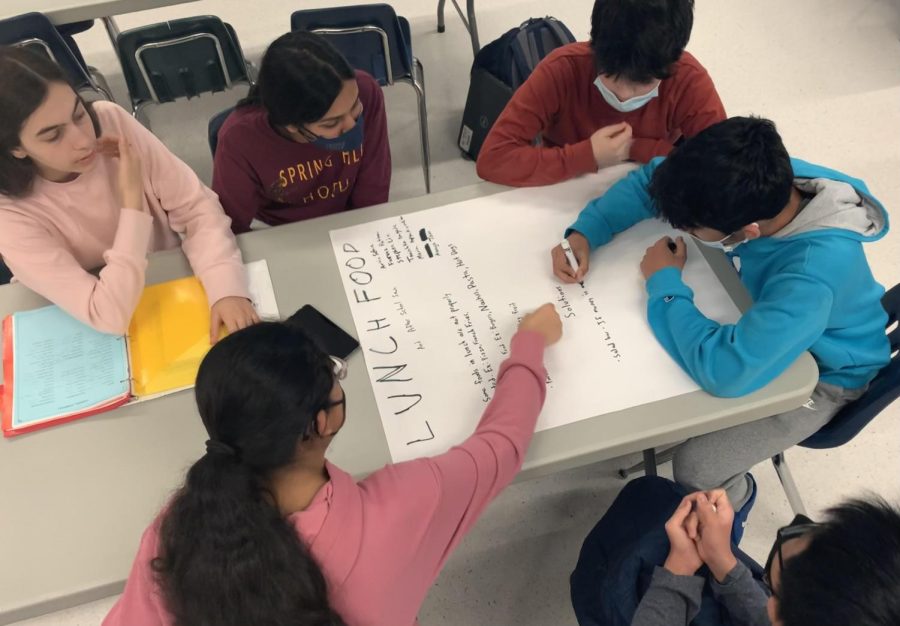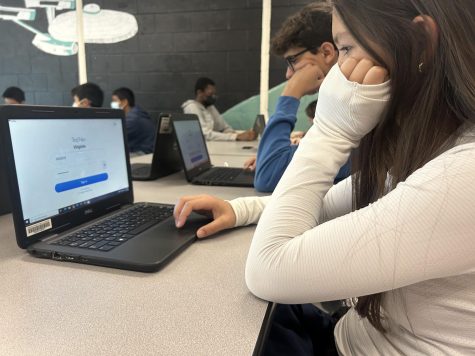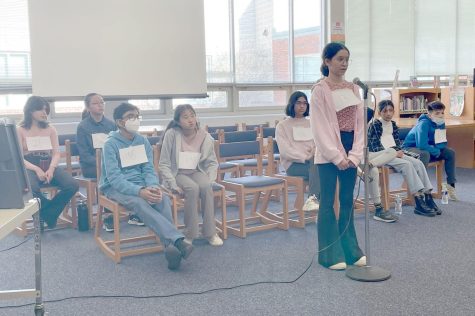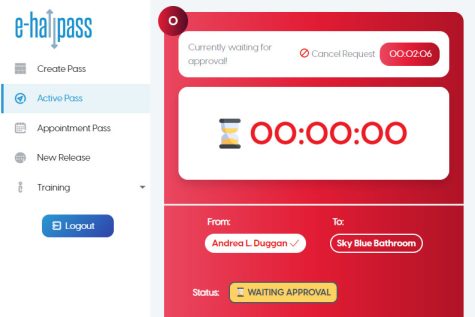‘Raising Student Voices’ Bridges Students and Community
In smaller working groups, members noted down problems and possible solutions based on their assigned category.
Getting their voices heard might just be one of the most important ways for students to be involved in their community. Longfellow’s Principal, Dr. Jim Patrick, wanted an organized way to hear students’ voices, so he created the group ‘Raising Student Voices.’
Although the main role of a student is to learn, adolescents are also responsible for developing into responsible adults—not only in terms of body maturity but in terms of the mind, too. ‘Raising Student Voices’ allows students to interact with others, including those who make the rules at Longfellow. Participating in discussions that guide decision-making is great preparation for citizenship in the larger society.
“’Raising Student Voices’is not just the adults, it’s the students having a role—having a voice in the school in areas they might want to see improvements,” stated Dr. Patrick.
He believes that the group will be an opportunity for students to represent their fellow classmates, share their concerns and experiences, and help be part of the solution at Longfellow.
Tanishka B.—an 8th grader involved with the group—hoped ‘Raising Student Voices’ would be a chance to leave an impact on the school.
“As I’m going through high school, I wanted to change something. I wanted to do something,” she said.
She expected the whole group to discuss problems and potential solutions—which was exactly what they did.
During the first meeting—February 11th—the whole group focused on pulling together and listing out areas in the school where they could make improvements. One of the most mentioned flaws was the crowded hallways. Students wished for a newly organized system to transfer the choky pathways into a spacious hallway where everyone can unhurriedly get to class.
Along with the flaws, members shared the good qualities of Longfellow as well. A member, Tyler H., expressed his affection towards the library in particular. The librarians, printers, and countless available resources were what attracted him to Longfellow.
After the meeting, members also mentioned that they didn’t expect to see as many students as they did—30 members—but at the same time, they were enlightened to find many people who carried similar opinions and goals that would create a better community for everyone.
Danneke V., another member of the group, was interested in how the leaders are planning to implement solutions for the problems they came up with.
“We can talk about changing the school all we want, [but] it’s not until we take initiative to change that we actually do make change,” said Danneke.
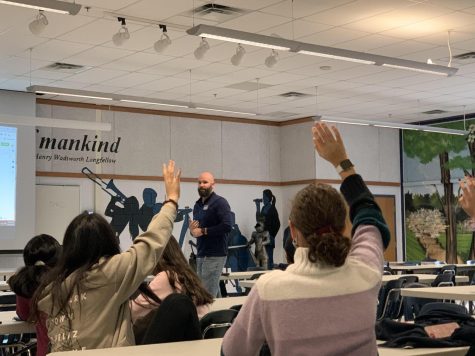
As an answer to this question, Dr. Patrick had an ordered plan in mind. According to his initiative, the students were to come up with several themes that would tie the diverse ideas together—which would eventually divide them into smaller groups. These working groups were to be paired with a Resource Adult, whom the leaders saw as a very important role. Dr. Patrick explained that the Resource Adults were there to help the students figure out the next steps, not to do it. He also found it important for the group to connect with the whole community—such as the county, other teachers, and more students—depending on the area they are trying to change. After all of these steps, it would finally be the time for students to take action, making all their initiatives happen in real life.
“I think that we should take in different people’s opinions—not just the ones that are in the group, [but] also the ones out of the group—because I think everybody’s opinions matter,” said Danneke.
Just like Danneke, every member of the group had a strong desire to take in more opinions and believed that it would improve the group significantly if they did so. Apart from the number of opinions, Danneke also felt it was necessary to get diverse opinions from people with different perspectives or backgrounds—in terms of race, desires, and how they view the community that they belong in.
As children grow up, countless ideas and emotions storm in their brains. Although these phenomena are very natural and common, many adolescents try to control and compress them instead of expressing it to the public because of their fear of social stigma.
However, the creation of the ‘Raising Student Voices’ now enables students to openly suggest their past, present, and future thoughts about the whole community—whether they belong to the group or not.
“The students’ voice, opinion, and experiences are valued by the adults, by the whole community, as we look to chart the course for Longfellow in the future,” said Dr. Patrick.
‘Raising Student Voices’ doesn’t only give students the opportunity to present their voices; it is also a representational presentation of the idea that adolescents can have more confidence in themselves and are always welcome to unroll any of their amazing ideas out of their heads and into the world.


